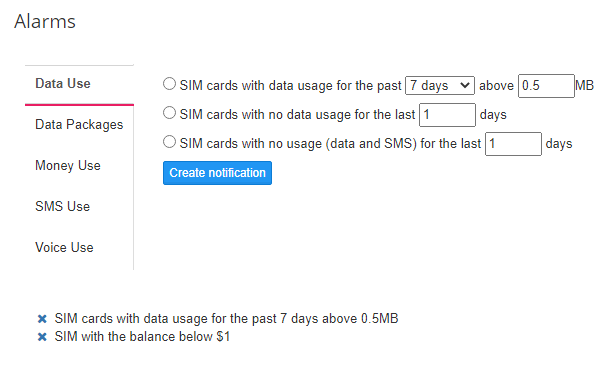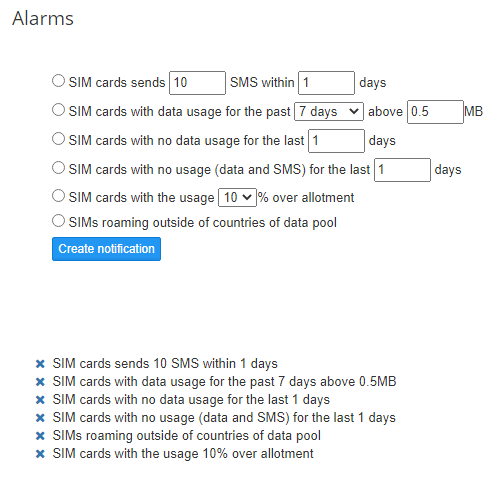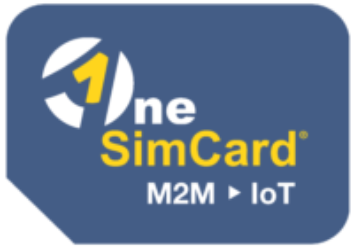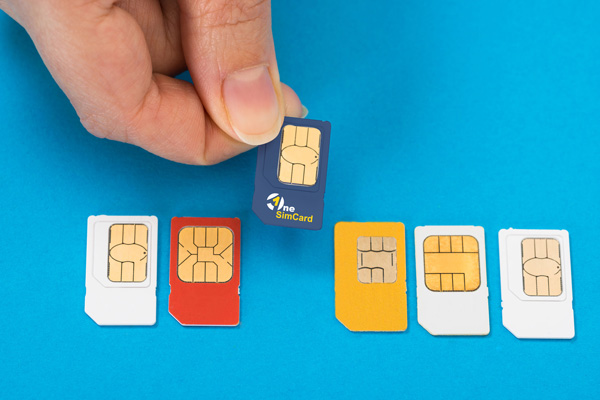In a continuing effort to provide unsurpassed service and control over your account, we launched a new “Alarm” feature in the OSCAR platform. This feature is available in both Pay-As-You-Go (PAYG) accounts and Pooled Data accounts with slight differences based on account type.
PAYG Account Alarms

Each category (Data Use, Data Packages, Money Use, SMS Use, Voice Use) has particular Alarms which can be configured. For example, the “Data Use” category has these Default Alarms available:
-
SIM cards with data usage for the past 7 above 0.5MB
-
SIM cards with no data usage for the last 1 days
-
SIM cards with no usage (data and SMS) for the 1 days
and the “Data Packages” has these categories available:
-
SIM cards with Data Package used up before the package renewal date
-
SIM cards with data packages used 10% of package data
Pooled Account Alarms

For Pooled Data accounts, the current Default Alarms are:
-
SIM cards sends 10 SMS within 1 days
-
SIM cards with data usage for the past 7 above 0.5MB
-
SIM cards with no data usage for the last 1 days
-
SIM cards with no usage (data and SMS) for the last 1 days
-
SIM cards with the usage 10% over allotment
-
SIMs roaming outside of countries of data pool
Once enabled, you will receive an email to the Master Admin email address as well as a notification on the new “Alarms” tab which will appear in the main menu of OSCAR. We tried to create what we thought were the most important and pertinent Alarms. If there are alarms you think would be helpful, please send us any suggestions to feedback@onesimcard.com



